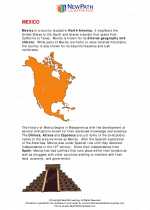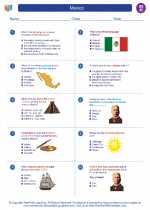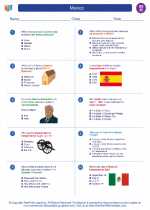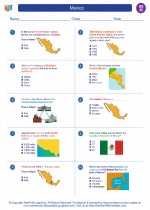Pacific Ocean
The Pacific Ocean is the largest and deepest of Earth's oceanic divisions. It extends from the Arctic Ocean in the north to the Southern Ocean in the south and is bounded by Asia and Australia in the west and the Americas in the east. The Pacific Ocean covers an area of about 63 million square miles and is home to numerous islands, including the Hawaiian Islands and the Galapagos Islands. It is a vital part of the Earth's ecosystem and plays a crucial role in regulating the climate and supporting marine life.
Study Guide
- Location: Where is the Pacific Ocean located? What continents and oceans border it?
- Size: How large is the Pacific Ocean in terms of square miles?
- Depth: What is the average depth of the Pacific Ocean? How does it compare to other oceans?
- Islands: Name some of the notable islands located in the Pacific Ocean.
- Importance: What role does the Pacific Ocean play in regulating the Earth's climate and supporting marine life?
- Exploration: What are some significant historical voyages and explorations that have taken place in the Pacific Ocean?
- Environmental Issues: What are some of the environmental challenges facing the Pacific Ocean today?
Studying the Pacific Ocean provides insights into geography, environmental science, history, and sociology. It is a vast and diverse subject that offers a wide range of topics for exploration and research.
.◂Social Studies Worksheets and Study Guides Eighth Grade. Mexico
Study Guide Mexico
Mexico  Worksheet/Answer key
Worksheet/Answer key Mexico
Mexico  Worksheet/Answer key
Worksheet/Answer key Mexico
Mexico  Worksheet/Answer key
Worksheet/Answer key Mexico
Mexico  Worksheet/Answer key
Worksheet/Answer key Mexico
Mexico 

 Worksheet/Answer key
Worksheet/Answer key
 Worksheet/Answer key
Worksheet/Answer key
 Worksheet/Answer key
Worksheet/Answer key
 Worksheet/Answer key
Worksheet/Answer key

The resources above cover the following skills:
National Curriculum Standards for Social Studies (NCSS)
TIME, CONTINUITY, AND CHANGE
SOCIAL STUDIES PROGRAMS SHOULD INCLUDE EXPERIENCES THAT PROVIDE FOR THE STUDY OF THE PAST AND ITS LEGACY.
KNOWLEDGE - Learners will understand:
Key historical periods and patterns of change within and across cultures (e.g., the rise and fall of ancient civilizations, the development of technology, the rise of modern nation-states, and the establishment and breakdown of colonial systems).
National Center for History in Schools (NCHS)
Historical Thinking Standards
Historical Comprehension
Reconstruct the literal meaning of a historical passage.
United States History Content Standards
Era 1: Three Worlds Meet (Beginnings to 1620)
Comparative characteristics of societies in the Americas, Western Europe, and Western Africa that increasingly interacted after 1450.
The student understands the differences and similarities among Africans, Europeans, and Native Americans who converged in the western hemisphere after 1492.
How early European exploration and colonization resulted in cultural and ecological interactions among previously unconnected peoples.
The student understands the stages of European oceanic and overland exploration, amid international rivalries, from the 9th to 17th centuries.
The student understands the Spanish and Portuguese conquest of the Americas.
Era 4: Expansion and Reform (1801-1861)
United States territorial expansion between 1801 and 1861, and how it affected relations with external powers and Native Americans.
The student understands the ideology of Manifest Destiny, the nation's expansion to the Northwest, and the Mexican-American War.
World History Content Standards
Era 3: Classical Traditions, Major Religions, and Giant Empires, 1000 BCE-300 CE
The development of early agrarian civilizations in Mesoamerica.
The student understands the achievements of Olmec civilization.
Era 6: The Emergence of the First Global Age, 1450-1770
Economic, political, and cultural interrelations among peoples of Africa, Europe, and the Americas, 1500-1750.
The student understands how states and peoples of European descent became dominant in the Americas between the 16th and 18th centuries.
Major global trends from 1450-1770.
The student understands major global trends from 1450 to 1770.
Era 8: A Half-Century of Crisis and Achievement, 1900-1945
Reform, revolution, and social change in the world economy of the early century.
The student understands the causes and consequences of important resistance and revolutionary movements of the early 20th century.
Major global trends from 1900 to the end of World War II.
The student understands major global trends from 1900 to the end of World War II.